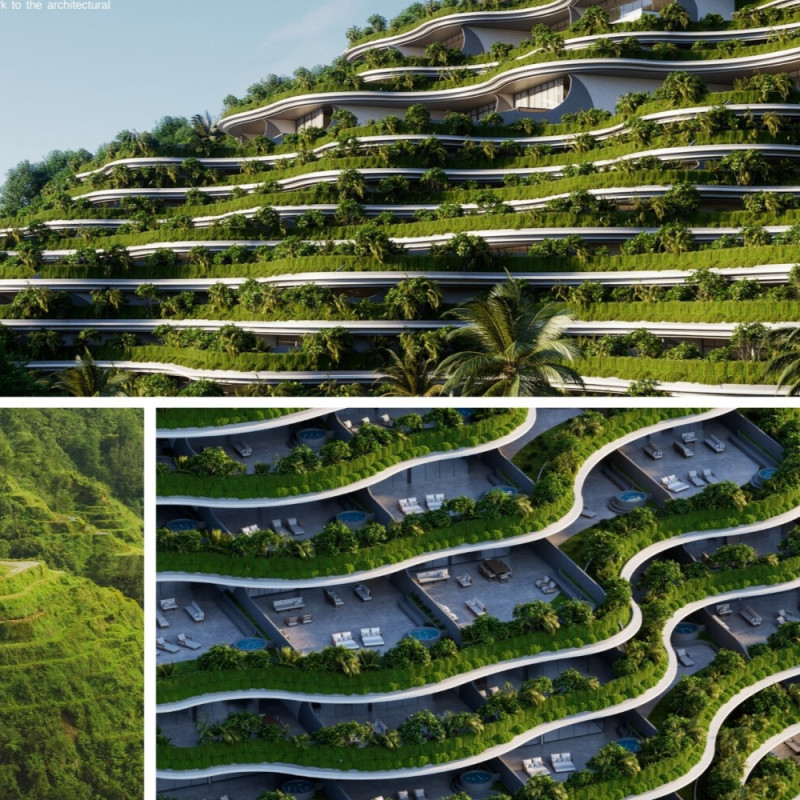5 key facts about this project
Upon analysis of the visible components of the project, one discovers a thoughtful layout characterized by an open floor plan that enhances natural light distribution and visual flow throughout the space. The design incorporates floor-to-ceiling windows, strategically positioned to maximize daylighting and provide unobstructed views of the surrounding landscape. This connection to nature is crucial, as it instills a sense of peace and accessibility, creating an inviting atmosphere. The architectural materials chosen for this project significantly contribute to its overall character and functionality. Utilizing a combination of exposed concrete, warm timber cladding, and large glass panels not only adds texture and depth to the façade but also ensures durability and low maintenance. The choice of materials emphasizes sustainability, aligning with modern practices that favor eco-friendly solutions.
In terms of unique design approaches, the project embraces biophilic design principles, integrating various elements of greenery both indoors and outdoors. Roof gardens, vertical planters, and strategically placed trees provide occupants with a natural respite from urban life while enhancing air quality. This integration of nature is not merely aesthetic; it serves functional purposes by providing insulation and energy efficiencies that contribute to the building’s overall sustainability.
The architectural design process demonstrates a keen understanding of the community’s needs, responding to local culture and climate conditions. The project features outdoor communal spaces designed for gatherings, encouraging interactions among residents. These spaces are well thought out, incorporating seating areas, pathways, and shaded zones that adapt to various activities, from quiet reflection to vibrant social events.
The circulation within the project is meticulously planned, enabling smooth transitions between different functional areas. Thoughtfully designed entrances and exits promote ease of access, enhancing user experience. Each floor has its distinctive character, tailored to meet specific usage needs while maintaining cohesion throughout the overall structure. This attention to detail not only reflects advanced architectural thinking but also ensures that the building remains adaptable as the needs of its occupants evolve over time.
Lighting design plays a crucial role in accentuating the architectural features of this project. Both natural and artificial lighting sources are balanced effectively, providing adequate illumination for both day and night activities. The integration of LED fixtures within the design highlights key architectural elements, enhancing the aesthetic appeal without detracting from functionality.
Overall, the project represents a sophisticated yet pragmatic approach to modern architecture. It transcends mere structural design, embodying a holistic vision that accommodates lifestyle needs while fostering a vibrant community spirit. By effectively combining thoughtful planning, sustainable materials, and innovative design strategies, the project stands as a testament to what contemporary architecture can achieve in urban contexts.
This project invites those interested in architectural innovation to explore its presentation further. By reviewing elements such as architectural plans, architectural sections, architectural designs, and architectural ideas, one can gain deeper insights into the intricate details that define this remarkable endeavor. The careful consideration behind each aspect of the project serves as an inspiring example of how architectural design can harmonize functionality and aesthetics within an urban landscape.























